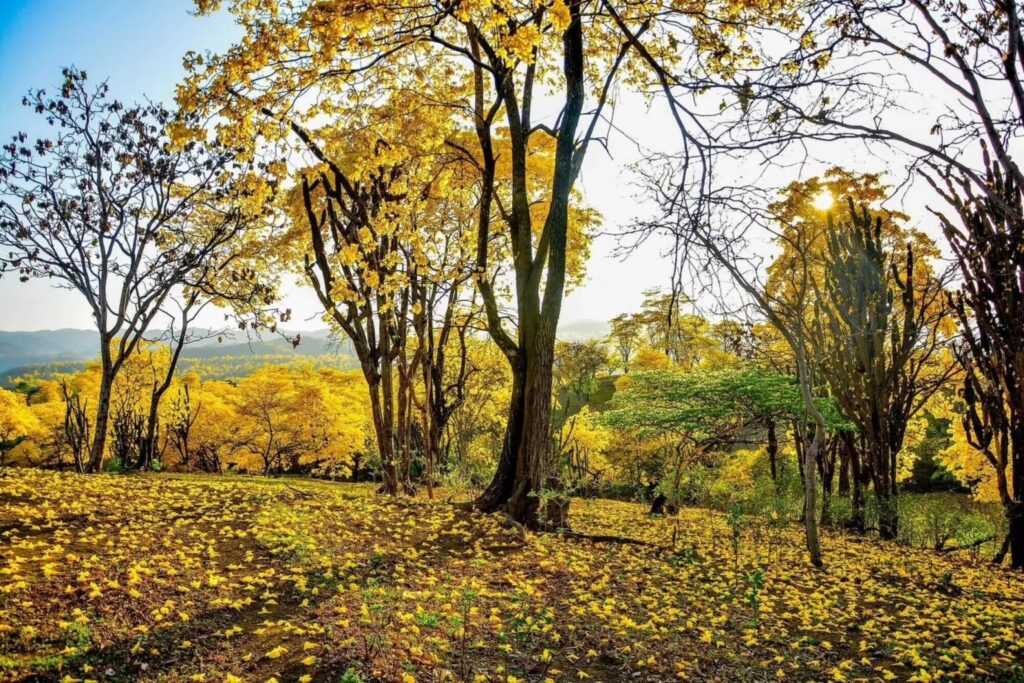The flowering of the guayacanes is a natural phenomenon that occurs annually in the southern region of Ecuador and northern Peru, in an area characterized by relatively dry, desert-like conditions. The term «guayacan» is generic; the specific name for the trees in this region is Tabebuia chrysantha.

When the trees bloom, the landscape transforms into a vibrant display of yellow, creating a visual feast across the forest. This unique flowering occurs because the guayacan thrives in an environment that is typically very arid. To survive, the plant conserves water, remaining completely bare during the dry season. Once the first rains arrive, the trees burst into bloom. After the blossoms fall, the trees sprout leaves that remain until the end of the rainy season.
The flowering lasts only a few days. After the peak bloom, the fallen flowers are often eaten by local goats owned by farmers.
The Impact of Weather
Weather plays a crucial role in the flowering process and the overall extent of the bloom. When rainfall is abundant, the entire woodland tends to flower simultaneously, typically within a few days. Conversely, if the rains are light, the trees may bloom at staggered intervals, with some flowering earlier and others later.
Where to See Ecuador’s Guayacanes in Bloom
To witness the guayacan trees in bloom, visit the southern Ecuadorian area of Mangahurco, located in the Loja province. The flowering can also be observed across the border in northern Peru. This region is sparsely populated, and tourist services are limited, which has surprised locals at the interest in this natural event.
When to See the Guayacan Bloom
Catching the guayacan in its brilliant yellow bloom requires a bit of luck, as the flowering lasts only about five days each year. Unlike the more predictable cherry blossom season in Japan, the timing of Ecuador’s guayacan bloom is harder to forecast. Due to the influence of weather, the blooming period can vary significantly. It may begin as early as November or occur in December, though it is most commonly seen in January.
Insider Recommendations
Given the unpredictability of the guayacan flowering, we advise against planning your trip solely around this event to avoid disappointment. Instead, consider spending some time in Loja and Vilcabamba during January and ask your guide to keep an ear out for news on the bloom. If it coincides with your visit, you can take a trip to see it—just remember to bring your camera to capture the beauty. Staying in more tourist-friendly areas is advisable, as accommodations and services are minimal in this sparsely populated region.
It’s important to note that if you are fortunate enough to visit during the flowering season, be prepared for dirt and gravel roads, as the area lacks significant infrastructure due to its low population density.
